Xanthocercis zambesiaca
Xanthocercis zambesiaca (Baker) Dumaz-le-Grand
Family: Fabaceae
Common names: nyala tree (Eng.); njalaboom, hoenderspoor (Afr.); moladi (Setswana); umhlwati (siSwati); mutshato (Tshivenda)
SA Tree No: 241
Introduction
This is a large impressive, evergreen tree with an exceptional dense, rounded to wide-spreading crown of glossy, drooping, dark green leaves and sprays of small rose-scented, creamy white flowers. It is ideal for large gardens.

Description
Description
Xanthocercis zambesiaca is a large tree with a dense, rounded crown that usually reaches 30 m in height. Young twigs are pale yellowy brown, covered with short soft hair, and have a slightly zig-zagging growth pattern. Older branches are pale grey, with small, indistinct, grey lenticels. Bark is grey, at times quite dark in tone, and is rough, but does not peel off. It has a massive, cracked trunk, often composed of multiple stems buttressed together.
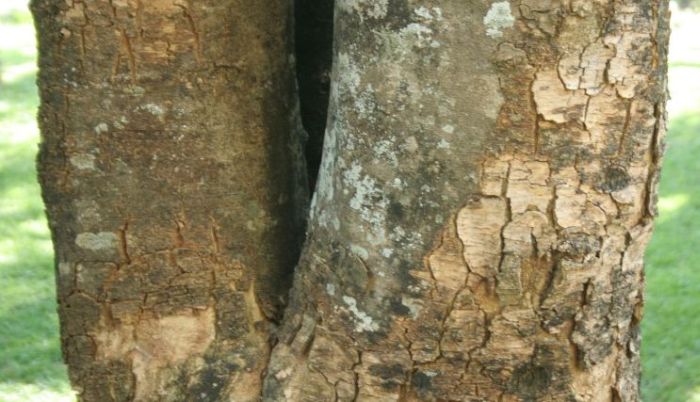
Leaves are compound, with about 7 pairs of leaflets, with a single leaf at the tip, alternate. Leaflets ovate with smooth margins and are dark green and shiny.
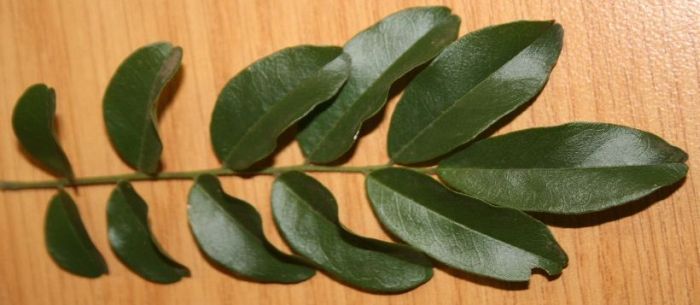
Flowers, pea-like, small, sweet-scented, white to cream-coloured, in hanging sprays, up to 100 mm long, at the end of the twigs, in spring and early summer (from September to December).
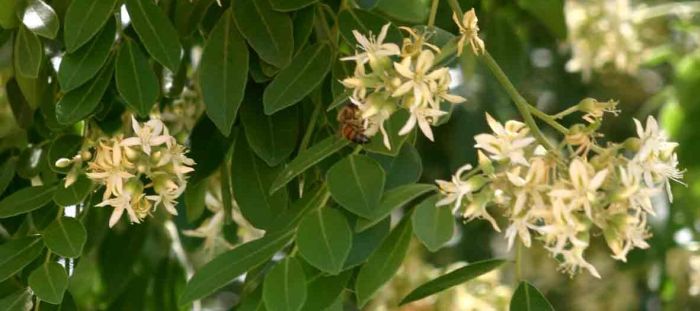
Fruits are grape-like, hanging downwards in clusters, smooth and shiny, yellowy green to yellow-brown when ripe, and there is a sharp spine at the top of each. Seeds are very dark brown, shiny, smooth, and shaped like 2 beans joined together.
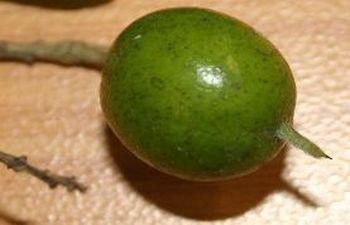
Conservation Status
Status
This species is not threatened and is evaluated as Least Concern (LC) on the Red list of South African plants.
Distribution and habitat
Distribution description
This species is distributed in Limpopo (between Soutpansberg and the Limpopo River) and Mpumalanga (Northern part of the Kruger National Park), and in Mozambique, Swaziland, Zimbabwe, Botswana and Zambia. It grows in hot dry bushveld, on deep, fine-grained fertile soil, deposited by water flowing over flood plains near rivers, in clay soil and on termite mounds, in valleys on river banks, at elevations up to 1 500 m. It is neither frost hardy nor drought resistant.

Derivation of name and historical aspects
History
The genus name Xanthocercis is derived from the Greek xanthos, meaning ‘yellow’, and cercis, refers to the genus Cercis. The species name zambesiaca means ‘of the Zambezi region’, where this species originates.
Ecology
Ecology
Xanthocercis zambesiaca is pollinated by insects. Monkeys, baboons and birds feed on the fruit in the tree. Elephant, giraffe and nyala, and other antelope, feed on the leaves and also eat the fruit that has fallen from the tree. Seeds are dispersed by animals, or the fruits fall directly beneath the parent plant. Young seedlings are often found around the parent plant. This plant grows slowly and will tolerate only very mild frost.
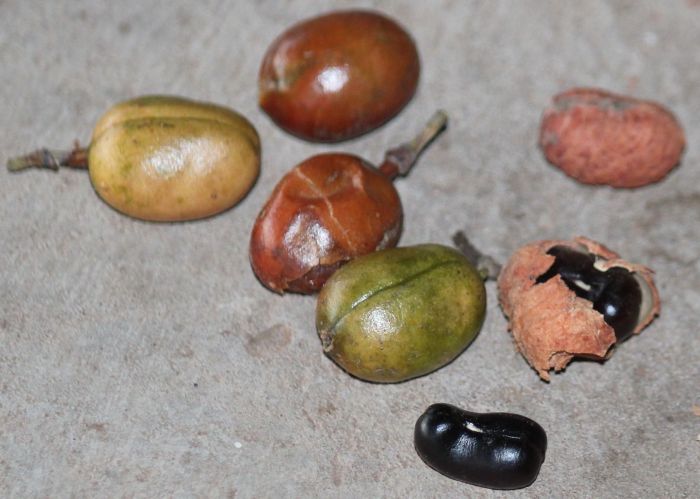
Uses
Use
It is traditionally used to treat diabetes mellitus, and planted as shade tree in large gardens or parks. The wood is used for timber and as fuel. Fruits may be eaten fresh or dried or can be crushed to make a porridge.
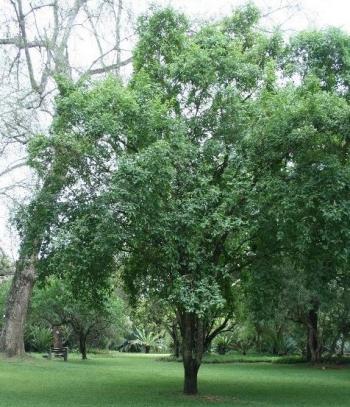
Growing Xanthocercis zambesiaca
Grow
Propagation of this species can be achieved by seeds. Seeds must be collected when they are dark brown, cleaned by removing the seed cover and sown when they are still fresh, in a seed tray filled with a well-drained sowing medium (e.g. 3 parts potting soil and 1 part river sand), in summer. The seed tray must be placed on a raised bench in a warm area covered with a net, until germination. The soil should be kept moist all the time, but not wet. Germination can be expected after 21 days.
References
- Coates Palgrave, K. 2002. Trees of southern Africa. Struik, Cape Town.
- Schmidt, E., Lötter, M. & McCleland, W. 2002. Trees and shrubs of Mpumalanga and Kruger National Park. Jacana, Johannesburg.
- Van Wyk, P. 1972. Trees of the Kruger National Park. Purnell, Cape Town.
Credits
Winfred Velephi Ngwenya
Lowveld National Botanical Garden
June 2019
Acknowledgments: Images not by the author as follows:
Tree with impala, in Mapungubwe, by Tony Rebelo (iNaturalist.org)
Flowers and a bee, by Bart Wurston (Zimbabweflora.co.zw)
Fruits and seeds, by Ricky Taylor (iNaturalist.org)
Fruits and foliage, by Craig Peter (iNaturalist.org)
.
Plant Attributes:
Plant Type: Tree
SA Distribution: Limpopo, Mpumalanga
Soil type: Sandy, Clay, Loam
Flowering season: Early Summer
PH:
Flower colour: White, Cream
Aspect: Full Sun
Gardening skill: Easy
Special Features:
Horticultural zones








Rate this article
Article well written and informative
Rate this plant
Is this an interesting plant?
Login to add your Comment
Back to topNot registered yet? Click here to register.